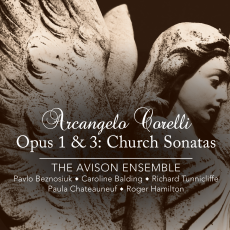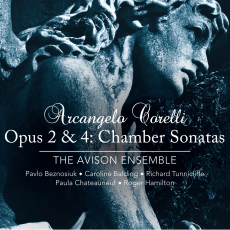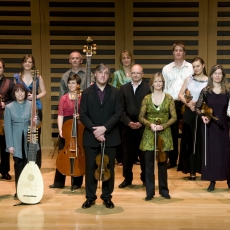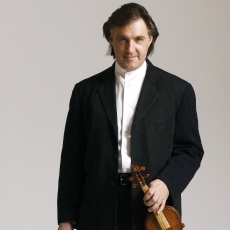The Avison Ensemble - Corelli: Opus 1, 2, & 4 - Fanfare
Archangelo Corelli’s iconic sets of sonatas need little elaboration, as they were some of the most popular pieces of his time. They served as models for other composers across Europe, not to mention being exported in print on a global scale. For Corelli himself, they demonstrated two of the most important subgenres of the trio sonata. The opp. 1 and 3 are sonatas da chiesa, or church sonatas, meant to be more reflective and contrapuntally severe whether or not they were actually done within the context of the sacred service. Opp. 2 and 4, on the other hand, were called sonatas da camera, or chamber sonatas, with the intent that they were mainly entertainment pieces akin to the Baroque suite. The contents include preludes in free form, followed by a series of stylized dances, just the thing to amuse both performers and their listeners of the day. Although published as sets, the works were written over an extended period of time, and thus they serve mainly as a compendium of the genre, rather than a deliberate collection.
I won’t go into the individual works here, given that these are iconic chamber works and quite well known. Both types were well known, and I won’t delve into the controversy of the parallel fifths, brought on by the descent of the violins and bass line in the Allemande of op. 4/3, but suffice it to say that the notoriety enhanced the sets’ popularity. As for the trio sonata itself, I used to have a trick question on music appreciation tests that asked how many instruments performed in a trio sonata. Inevitably, there were always a number who stated three, and in order to extricate themselves from not having listened to descriptions of the continuo pleaded that this most likely consisted only of a cello. I rest my comments on their defense here. The Avison Ensemble chooses to present the basso part as a trio of instruments; a cello, a keyboard (here divided between harpsichord and organ), and an archlute. Any of these would be acceptable for the time, though the continuo itself was entirely variable. The result is a stronger melo-bass division, not to mention a thicker texture that seems entirely appropriate. Violinists Pavlo Beznosiuk and Caroline Balding have a clear tone and easy style of playing that fits these works perfectly. The intonation is excellent, and the straight tone allows for Corelli’s often interesting counterpoint and suspensions to be perceived with ease. The violins are lighter and the enhanced continuo group provides a good foil for the higher pitches. Ornamentation is used discretely, and I find the tempos fit the music by being never too slow or rushing things.
The trio sonatas have an extensive discography, though my perusal showed relatively few complete recordings of all four sets. London Baroque of course did the recordings back in the 1990s on Harmonia Mundi, and given that the majority of discs of Corelli’s works favor the op. 6 Concerti grossi or the op. 5 Violin Sonatas, this fine recording has served as the reference for this larger portion of the composer’s works. I will say that this has now been replaced in my opinion by the fine playing of the Avison Ensemble. For collectors of Baroque music, this is the go-to recording of four sets of works that defined the chamber genre during that period.



